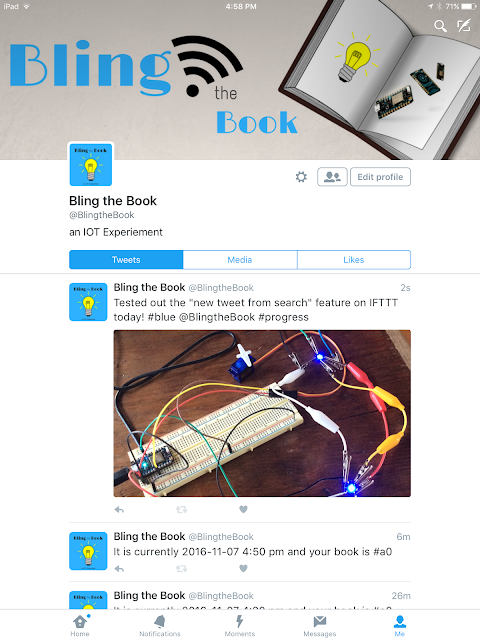Merging Different Functions
I've reached the point in my exploration where I've got several different functions merged into one program and a working prototype that uses alligator clips, a servo, a buzzer, NeoPixels, and surface mounted LEDs. The trick is going to be figuring out how to streamline the circuit so that it can fit neatly inside of a book (that will be built to accommodate it), with different functions playing on different pages to help tell a story of some sort.
I just ordered some conductive fabric strips to test out for the hinges. This tape is conductive on both sides, so I could conceivably use it on the hinges and adhere it to copper tape soldered to the Photon.
I have been unsuccessful getting a more compact servo to work with the code, so I may have to table the servo idea, unless I can come up with a way to conceal it. The servo I'm currently using, the TowerPro SG90, is over an inch tall. The one I want to use, the HK5320, is much smaller. I can't figure out if the issue I'm having relates to voltage or something else.
SMD LED Function


